As happens all too rarely in this city, at the recent Hobart Fringe Festival’s “What’s Wrong with (Hob)art?” Forum, we three guests, performance artist and underground film maker Andrew Harper, Ouse born Irish entrepreneur and owner of Mouse on Mars Patrick Caplice and myself spent as much time listening instead of telling the audience what we think is wrong. Which in no way makes the following ideas superfluous so much as in urgent need of wider distribution, if not even more direct forms of concerted action …
At first all I could think of as an answer to “What’s Wrong with (Hob)art” was proffering myself. I’m fairly sure there are any number of local and state government arts and cultural bureaucracies who believe that if I weren’t here, their problems would disappear.
That’s about as silly as trying to float down the Derwent in a claw footed bath tub, but unfortunately, there are still many flat earthers who think art critics and cultural commentators simply don’t belong in the arts in our community.
But nor do artists belong here it transpires.
Readers of my weekly column in the Sun Tasmanian know that one of my main criticisms of the current state government is its failure in spite of a number of opportunities to appoint a single artist to the Board of Trustees of the Tasmanian Museum and Art Gallery.
As I get older, I will unfortunately get more and more boring until this situation changes or the newspaper fires me. Until then, I’ll repeat this urgent Tasmanian specific situation for those unfamiliar with how it works in all state art galleries in every other capital city in Australia; TMAG is the only public art gallery not to have a single artist on its Board of Trustees – that means the premier art institution in our state lacks any recognizable professional expertise and critical credibility in the visual arts in its trusteeships, let alone its executive. They’ve got pharmacists, gallery owner’s husbands, city council aldermen, academics, public servants, entrepreneurs, bookshop owners, but not one single artist.
So much for the acceptability of artists in our community huh?
No wonder TMAG is bulging with stuffed convicts and offensive assemblages of multi-tribal activity! No wonder our city is overcrowded with the work of one single artist who’s bewitched our city council into believing that bronze is best, no matter how bad it is, when it comes to choosing public art for our state’s capital.
I’ve come to the conclusion that because they won’t actually engage with living artists in such estimable positions of public responsibility, the current state and local authorities have almost no idea of who artists are!
But in the experience of asking this question so persistently, I am forced to ask another perhaps more dangerous one. Am I the only person in this city who thinks it’s not ok for TMAG to have no artist on its Board of Trustees? Am I the only person reaching for my sick bag every time I pass one of far too many bronze commemorative waves, encrusted with raised historic lettering attempting to pass itself off as legitimate work of art? Why are artists too afraid to speak up about these fundamental issues affecting our identity and the integrity of the visual arts in this community?
This Forum’s oddly worded and deeply loaded question has intrigued me to explore an idea that I rarely get to write about here in Tasmania. I’m not sure I can answer the question of why artists are afraid to speak up on behalf of integrity and excellence, but I have a few ideas as to what might be contributing to this dangerous status quo.
This Forum’s oddly worded and deeply loaded question has intrigued me to explore an idea that I rarely get to write about here in Tasmania. I’m not sure I can answer the question of why artists are afraid to speak up on behalf of integrity and excellence, but I have a few ideas as to what might be contributing to this dangerous status quo.
In recent years, I’ve come to the awkward and somewhat unpleasant conclusion that we’ve fallen into a trap in Tasmania in general and Hobart specifically. It’s the trap of allowing “creativity” and “culture” to be described as a lifestyle, rather than as hard won life long vocations. Hobart is big on lifestyle isn’t it? Fine food, out-door dining, beautiful wines, fresh seafood, alfresco jazz all imbibed in a relentlessly convivial atmosphere of monochromatic cheer, against a backdrop of clear skies and dappled river light. Excuse my cynicism, but does all this add up to a challenging intellectual menu of fresh ideas and dangerous ambitions, or is it more about one particular target market’s comfort zone?
This scruffy annual parade of dredlocked, anarchic, emboldened, feral, brassic, drum beating intelligence, insight and indignation, that no matter what Robyn Archer throws at it, is a horrible dark, under-funded below ground hybrid thing that just keeps on mutating and surviving.
What’s wrong with this tranquil picture of a form of leisure that has to be earned and carefully guarded by price point? Is this “lifestyle” image merely a portrait of one particular socio-economic group of (mono-cultural) consumers, rather than our own very nuanced, complex, questioning, rebellious, seditious, disloyal selves? Has marketing Hobart as worldly and desirable created a grand but inescapable prison of cultural ordinariness? Not only are our African and Asian families and the many other new faces of Hobart missing in this “lifestyle as culture” portrait, but also so too are most of you here at the Hobart Fringe. This scruffy annual parade of dredlocked, anarchic, emboldened, feral, brassic, drum beating intelligence, insight and indignation, that no matter what Robyn Archer throws at it, is a horrible dark, under-funded below ground hybrid thing that just keeps on mutating and surviving.
So, here’s my question again. Who invited the international trend of lifestyle shopping to replace the integrity and courage of difference that must naturally be found at the heart of the arts in Hobart if it is to be any way an authentic experience of our existence, let alone artists’ finest abilities? What has so actively dissuaded us from bothering to protest loudly and frequently about the serious institutional shortcomings in our visual arts industry? Given the wealth of genuine artistic talent here, why haven’t we actively and openly addressed the extraordinarily low status of the Tasmanian Museum and Art Gallery’s engagement with Tasmanian artists? Is there any other state art gallery in this nation that dares replace the necessity of critical excellence and respect for artists with departmental boasts of increased tourist visitors?
Lifestyle as culture
What do the people in the happy Hobart “lifestyle as culture” pictures talk about other than where to shop on the mainland and who went to school with whom? Do we really need to know, or are their interest areas sufficiently represented in the safe-as-a-pram 2005 Ten Days’ programming? Here’s where my question has inevitably leads to my next line of inquiry. Are the arts being dumbed down by Hobart’s vision of culture as a “lifestyle” choice rather than honoring the committed vocations of writers, artists, poets, musicians et al? Without properly functioning authentic, nationally recognizable models of excellence in the visual arts and literature in Hobart, we may never actually know the answer to this one.
Yet it is unfair of me to focus on one particular socio-economic group in the lifestyle as culture debate. Why? Because, as uneasy as it makes me to say in it in a room full of rebellious anti-social creatives, we too are guilty of conditionally “lifestyling” our commitment to and engagement with the urgent need for models of artistic excellence in our community. In saying this, I realize I’m proffering another bone of rank contention. Even so, my belief is that in selecting environmental issues as the primary focus for political dissent, Tasmanian artists have become identified as choosing to work here because of an unusually active need for clean green unadulterated vistas to stimulate them to make their work. Everyone from the Minister for the Arts, to the Greens, to the Liberal party has absorbed this mistaken – and I suggest, somewhat middle class – vision of Tasmanian artists being drawn to work here because of their outstanding need for fresh air and green horizons. Tell that to an artist in Lodz or Liverpool and he’ll tell you that this is simply another “lifestyle” choice, never an artistic necessity for genuine inspiration and insight. In both places you could expect to be dismissed for being so fussy and equivocal about where you make your work as an excuse for not making it, or not making it well enough.
So to me, it is just as important to ask whether the social culture of environmental protest has also hijacked the vocation of making art by turning it into a lifestyle ideal? It’s a complex and potentially contentious argument. I’m sorry to say, much as I too dream of an end to old growth logging and environmental devastation, clean air and litter free roadsides will never actually make Tasmanian art any better or worse than it already is. To make great art, we have to risk believing in great art’s most grandiose aspirations as well as the inspiration of other great artists’ struggles, journeys and exquisite aesthetic discoveries.
Protest and resistance
Having said that, as an art critic and cultural commentator, I recognize that if indeed protest and resistance are the strongest areas of subjective interest for Tasmanian artists and their followers, then our arts institutions should be actively servicing that interest with professionally developed exhibitions, projects and commissions exploring the best national and international artistic practice in this particular field of interest. Given our cultural history, perhaps we should aspire for our cultural institutions to become a centre of excellence for local, national and international art that focuses actively on protesting injustices. The work of international artists Hans Haacke, Joseph Beuys and Jean Michel Basquiat all belong in the active eye line of an arts community such as ours that’s impelled to question authority through subjectively directed artistic expression, with or without genuine artistic innovation.
But I’m guessing these particular heroes of mine are relatively unfamiliar names to most art lovers in Tasmania. In spite of the popularity and historic merit of their respective political bete noirs – racism, corporate malfeasance and environmental destruction – their cultural breakthroughs have occurred not by endorsing their respective community’s subjective needs for art to assume a central role in forwarding dissenting social commentary. No, they changed the world not as a consequence of the issues they fought for, but because of their emboldened unconventional inventiveness as visual artists. At best, artists are visual philosophers, intent on provoking new perceptions through shifting familiar realities, disabusing assumptions and pushing our spatial and cultural expectations just that little bit further from the safety of our conventional axis.
As an art critic in Hobart, I’m pretty much beholden to what local artists themselves believe subjectively compels them to choose certain kinds of imagery. But it is also my obligation as an art critic to ask whether a painting of a clear fell site for instance, can operate as a work of art without any of the cultural imperatives that threaten to love it to death here in Tasmania. Unfortunately, if the work of art that aims to place the issue onto a contemporary art gallery wall fails miserably as an authentically original artistic idea, then it’s my job to say so.
Have I complained enough? Throughout this community there are so many instances of individual artist’s courageous determination, fierce independence, intellectual integrity and genuine open-hearted curiosity. The Fringe Festival is full of disruptive new voices and the murmurs of distant waves of dissent, revelation, aesthetic treachery and mad dangerous dreams of seduction. To me, it’s a healthy sign of our community’s slow but steady progress towards its aspired destiny to one day be recognized as the safest place in Australia where artists can think aloud.
Jane Rankin-Reid is a columnist with the Sunday Tasmanian and www.onlineopinion.com.au. This address was prepared for the recent Hobart Fringe Festival’s “What’s Wrong with (Hob)art?” Forum.


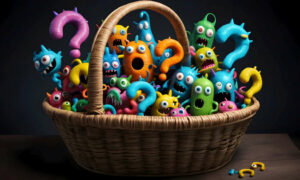

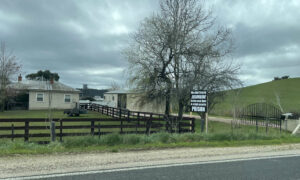



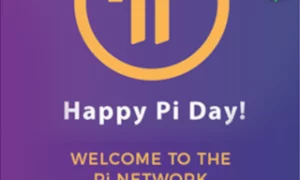



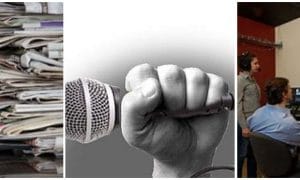



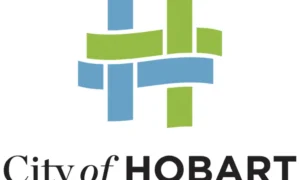



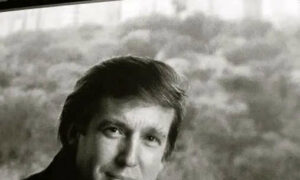





Greg Barns
February 17, 2005 at 05:00
Jane Rankin-Reid’s anaylsis is spot on. As a friend of mine said recently of one arts institution – the TSO – it’s being used as a marketing tool just like salmon and pinot noir.
The TSO’s Board is the most lightweight of any orchestral board in Australia. Chaired by the Chief Justice of the state – that in itself is unusual – it includes no top class creative people or people with strong links into the fundraising world of Melbourne and Sydney.
It’s recording contract with ABC Classics means the reach of its works is limited. Contrast the New Zealand Symphony which records with Naxos and is regularly in the BBC Classics magazine top 20 CDs for the month.
The TSO’s programming reflects its board and management – unimaginative. Rarely does it venture beyond the standard repetoire.
Its chief conductor, Sebastian Lang-lessing has none of the presence of a Markus Stenz or Gian Luigi Gelmetti – both whom excited, or are exciting, Melbourne and Sydney respectiviely.
The TSO is a fine ensemble let down by the provincial nature of its management, board and a a state government that sees it only as a marketing tool.
Isabella
February 22, 2005 at 15:11
What a pity Greg Barns, Tasmania’s NAVA’s
representative, couldn’t manage to participate in
and further enhance the vital debate at hand.
His comments, while of value to the much broader
Arts debate, indicate a worrying lack of true
commitment to the local Visual Arts Community
and their plight.
Barns’ decision to use Jane Rankin-Reid’s
thoughtful and detailed piece as a platform for his
TSO lobbying confirms what so many in Hobart
have long suspected and discussed – we need a
new NAVA spokesperson, URGENTLY!
Greg Barns
February 24, 2005 at 07:56
Ms Isabella Emerson’s comment is wrong and defamatory. I am considering legal advice on its publication at present.
Further, she has never contacted me with regard to Nava matters in the six years I have been a Director of that organisation.
Finally, Ms Emerson has got the role of NAVA wrong. I am not a state representative but a director for the organisation nationally. NAVA does not have state by state represenation.
She also seems to forget my role in helping to ensure the Myer report was implemented in Tasmania.
Isabella
February 24, 2005 at 13:28
Greg,
I have the right to an opinion – and mine differing from yours does not constitute defamation. I’m simply unimpressed with your efforts and representation as a NAVA Director. (imagine if John Howard launched legal action against every person who believes – and publicly states – their dissatisfacion with the execution of his role as Prime Minister!)
Given your tireless calls for dissent to be heard, not silenced, I would have thought you would understand that includes the right to disagree with you!
Greg Barns
February 25, 2005 at 06:05
I note yet again, that Ms Emerson has chosen to attack me without substantiating her claims. Furthermore, as I said, I have never heard of this woman and nor has she made any approach to me in the past six years.
Ms Emerson also misunderstands my view on dissent. The right to dissent does not include impugning people’s integrity and professional capability without substantiation.
Annie Hill
February 25, 2005 at 14:58
The tone sounds very familiar to that of the Gunns debate doesn’t Isabella – You say something bad against me and I shall see you in court!
Some people say that this is a case of ‘it’s not what you know but who’.
If you have a look at the NAVA website it says:
Who is on NAVA’s Board? Current at December 2004:
Co-opted members:
Greg Barns is currently CEO of the Australian Gold Council and chairman of the Australian Republican Movement. He is a regular columnist in the Australian Financial Review and The Age newspapers. He was the National Campaign Director for the Australian Republican Movement throughout 1999 and prior to that was Chief of Staff to the Federal Minister for Finance, Hon John Fahey MP. He has also been the Chief of Staff to former Premier of Tasmania, Ray Groom; a research analyst for the Tasman Institute and a member of the Victorian Bar Council. He is currently also on the board of the Documentary Foundation, on the council of the Sydney Symphony Orchestra, and is a non-executive director of Parker & Partners Pty Ltd, Powerlan Ltd and IT&T Services Pty Ltd.
Surely you must have know this Mr Barns as you are such a contributing member of NAVA!
Like you and many others say Isabella – we need a new NAVA spokesperson, urgently!
If you are so against the TSO Mr Barns, why not become a part of the Board and do something about it?
Isabella – Have a read of the contributions made by Aphrodite Drinkwater and her ‘good friend’ Bacchus No-Smoke …
Greg Barns
February 26, 2005 at 05:06
Ms Hill’s contribution is unintelligible. But to the extent that it appears to be making some point, I would again note that I have never met Ms Hill and she has never approached me about NAVA matters in 6 years!
Once again, it’s vilification without any substantiation.
As for the TSO, if Ms Hill had bothered to read my reviews in Saturday’s Mercury she will know that I beleive it to be a fine ensemble.
And one doesn’t just get on the Board of the TSO – one has to be invited. Unlikely in my case!
Isabella
February 26, 2005 at 10:56
I have a sincere apology to make to the entire Visual Arts Community of Tasmania – but first, a final observation and statement regarding the preceding series of comments.
Greg Barns describes the TSO Conductor, Sebastian Lang-Lessing, as lacking the presence of a Stenz or Gelmetti and the Board in general as “unimaginative” and “lightweight” – a clear statement (dissent or defamation?) of his frustration and dissatisfaction with their performance and one that he is free to make without fear of retribution, litigation or denigration.
His right to make such statements – even though I believe them to be unnecessarily personal and unhelpful – is one I would defend strenuously.
The irony is that, if one re-reads my earlier comments, I’ve done nothing more than that – express my dissatisfaction – and in a far less personal way.
So – dissent or defamation?
If I am guilty of defamation Greg, then – by your own criteria – so are you. Alternatively, we were expressing our 0pinions – to which we are both entitled.
“Live by the sword, die by the sword”, Greg – or run the risk of potentially being viewed as illogical, inconsistent and irrelevant. It’s my hope that you will chose the former and actually progress the debate (rather than detract from it)in the future.
Finally, to the entire Arts community of Tasmania, I apologise for inadvertently participating in the current derailment of vital Arts discourse, this time commenced by Jane Rankin-Reid in her original Tas Times piece “What’s wrong with (Hob)art?”: http://oldtt.pixelkey.biz/index.php/weblog/comments/whats-wrong-with-hobart/
“Fear” is as corrosive to freedom of expression, creativity and progress as the sea is to fertile ground.
Fear of retribution and the risk of losing funding – if it can be secured in the first place – has silenced voices and stunted growth and development in the Arts sector in Tasmania for long enough.
It may be tempting to follow “Annie Hill’s” understandable lead and focus on the aggressive, litigious behaviour of the minority, but that will only side-track us all even further. (no disrespect intended Annie – you had the courage to post it and speak out – bravo).
I would, however, encourage you all – particularly the large number of you who have emailed me with disturbing stories of intimidation and censorship – to do as I have done, contact NAVA and – in a respectful, positive and creative way – have your say and help create a positive wave of progress. )
(I emailed Tamara if that is of use – Tamara Winikoff
Alternatively – and considering it was her piece that started all of this – contact Jane Rankin-Reid herself a strong advocate for the Visual Arts in our State. (I hope that presumptuous suggestion is O.K. with Ms Rankin-Reid!)
I’m stepping out of this debate for the time being as I’ll be away. Good luck to you all and remember – speak out respectfully but speak out – the alternative is too restrictive and toxic to even consider.